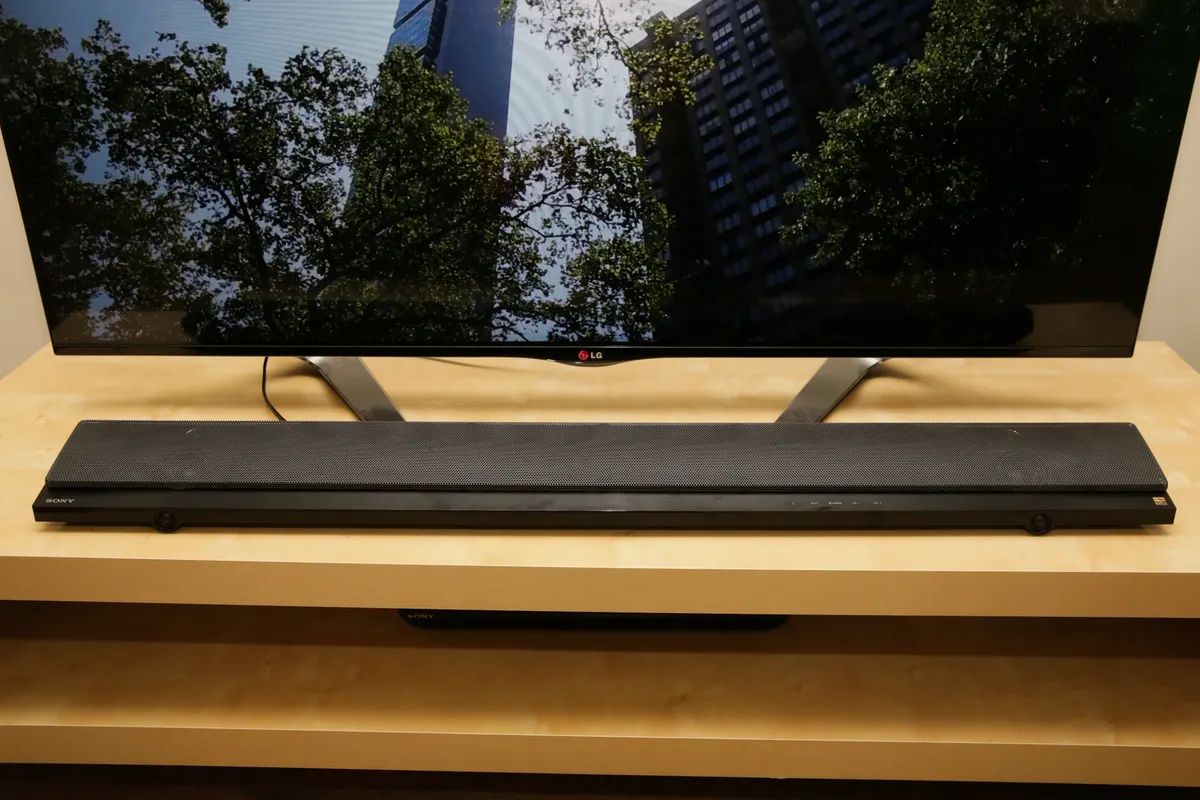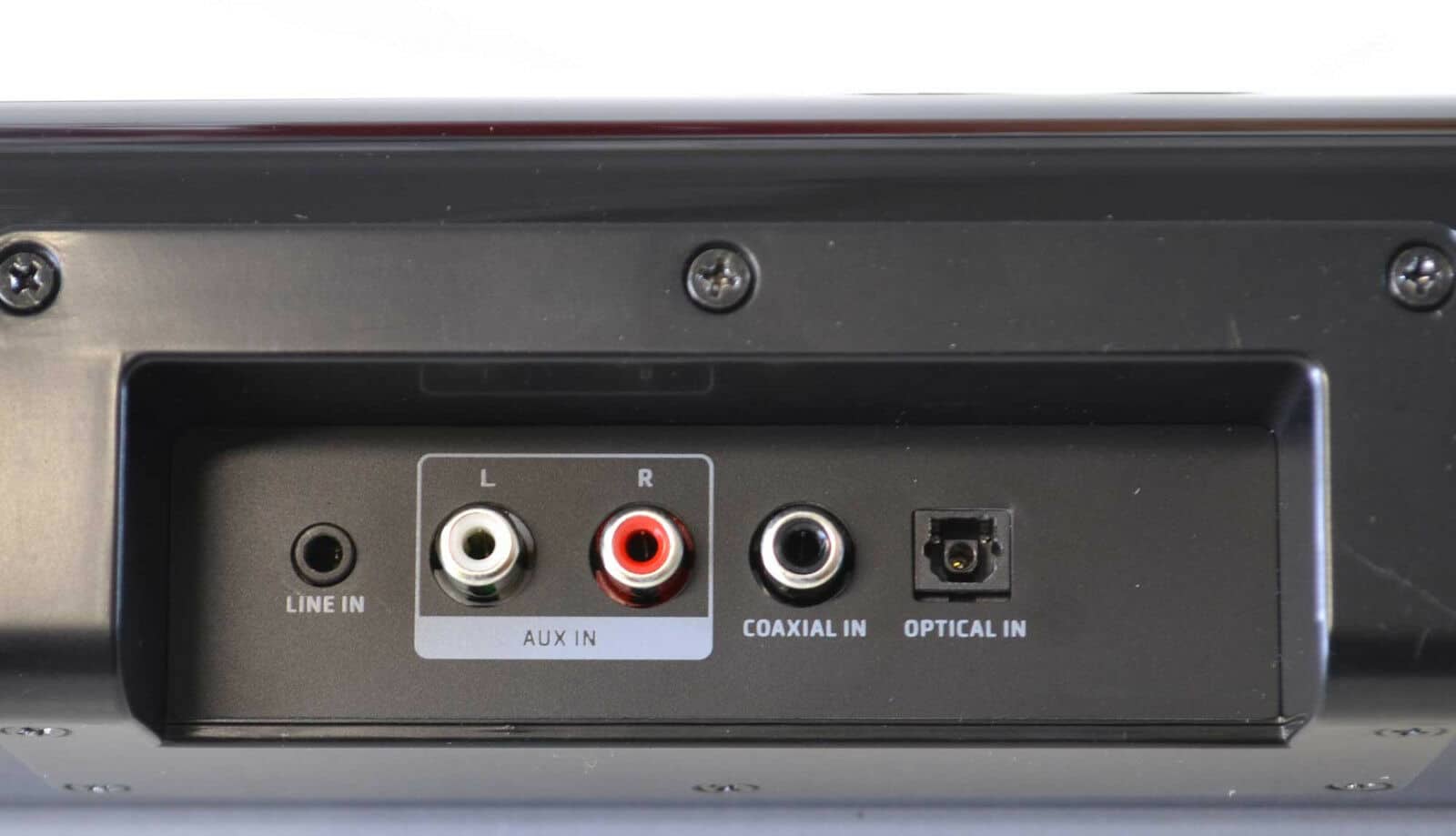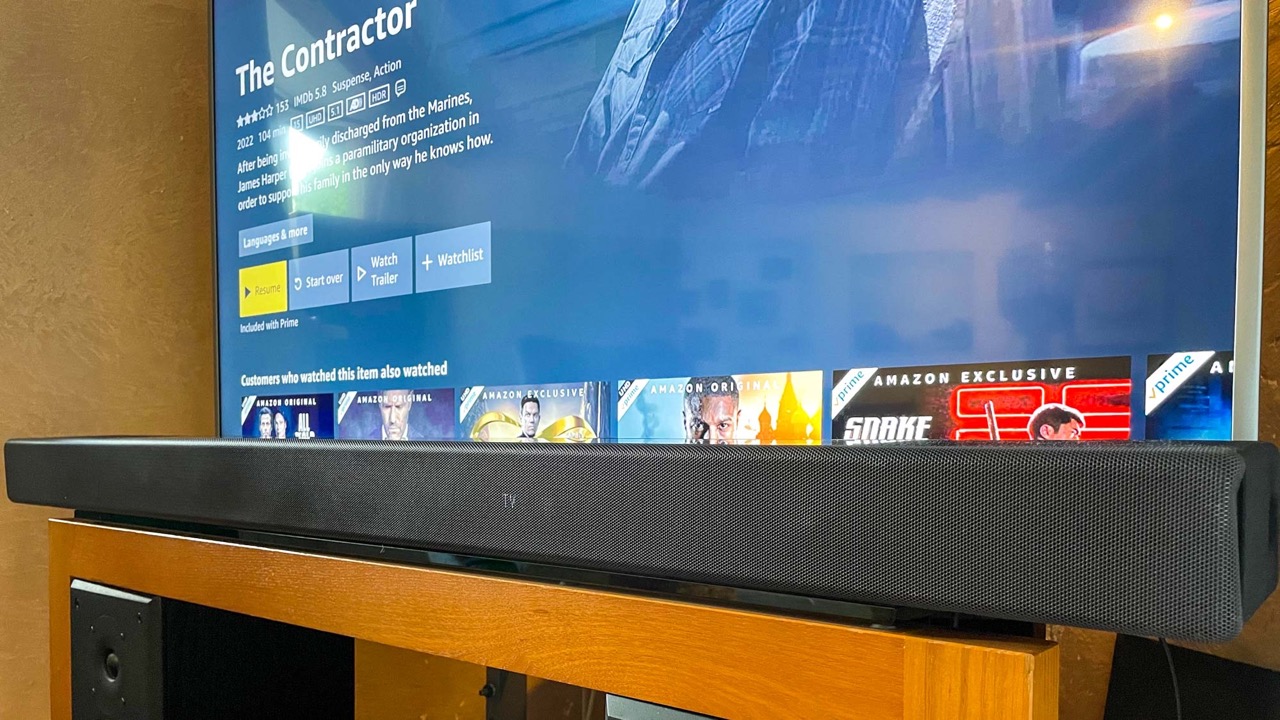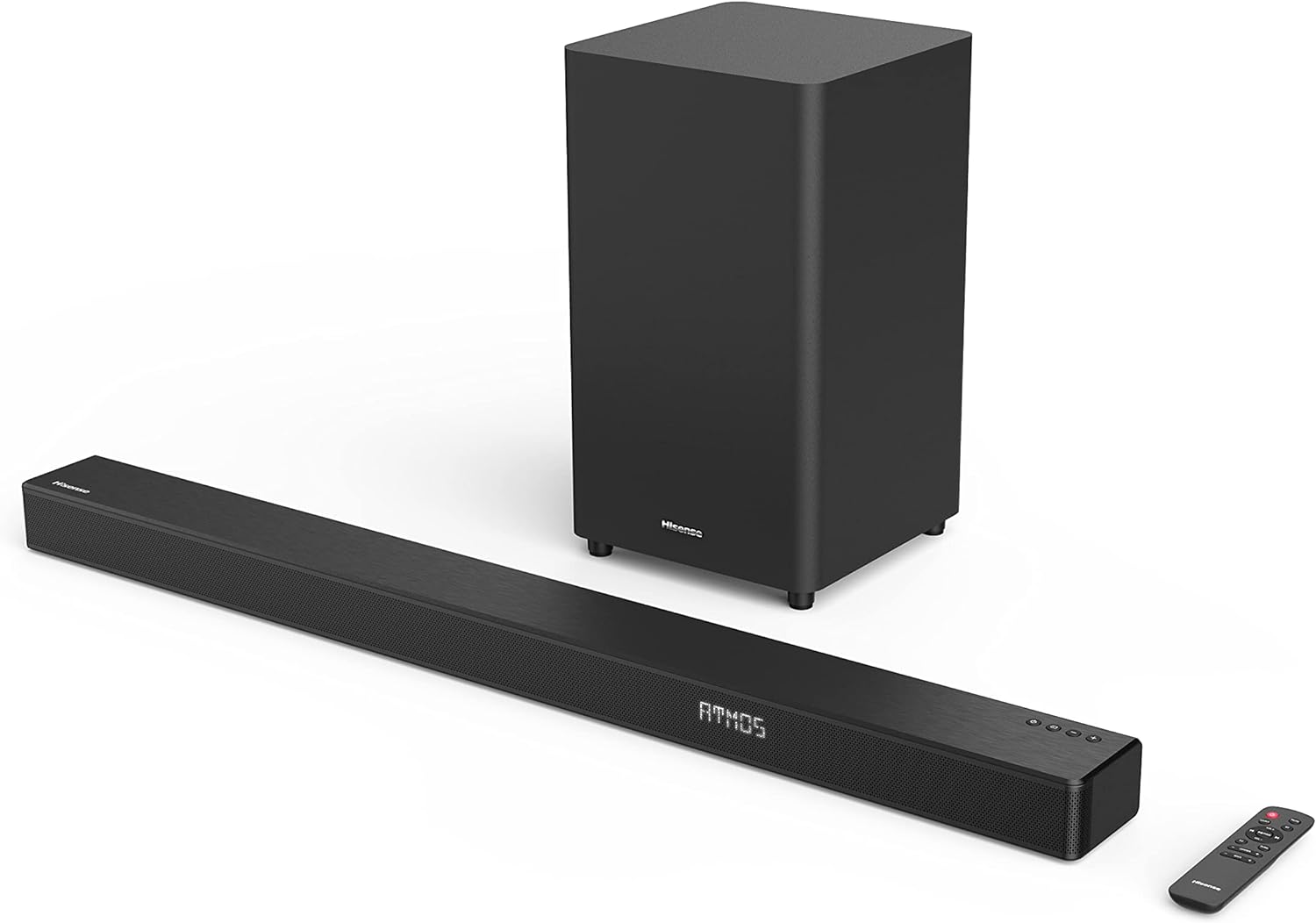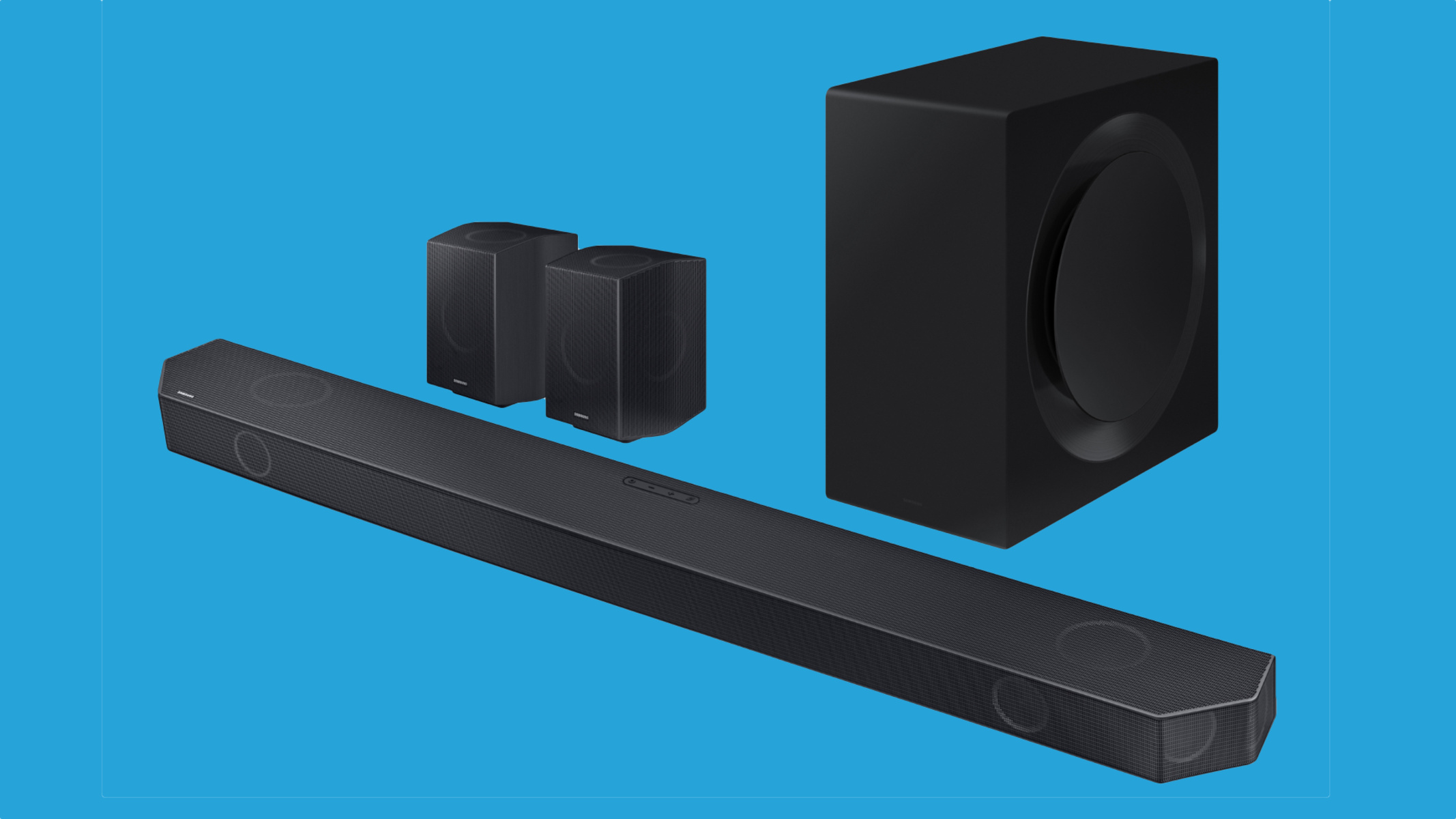Introduction
Welcome to our troubleshooting guide for Samsung soundbars. If you are experiencing difficulties connecting your Samsung soundbar to your TV, you’re in the right place. Soundbars are a popular choice for enhancing the audio quality of your TV viewing experience, but sometimes, they can present connectivity challenges.
A soundbar is designed to deliver immersive sound, eliminating the need for multiple speakers cluttering your living room. However, the process of setting up and connecting the soundbar to your TV may not always be straightforward. This can be frustrating, especially when you are eager to enjoy the enhanced audio experience that a soundbar can provide.
In this guide, we will address some of the common issues that arise when trying to connect a Samsung soundbar to a TV. We’ll provide step-by-step troubleshooting tips that will help you identify and resolve any connection problems you may encounter. Whether you’re using a wired HDMI ARC or optical connection, or a wireless Bluetooth connection, we’ve got you covered.
Our troubleshooting guide will walk you through the necessary steps to check your connections and ensure everything is properly set up. We’ll also delve into specific troubleshooting methods for each type of connection. Additionally, we’ll cover the importance of keeping your soundbar’s firmware up to date and how to reset the soundbar if necessary.
So, if you’re struggling to get your Samsung soundbar connected to your TV, relax and let us guide you through the process. By the end of this guide, you’ll have a better understanding of how to troubleshoot and resolve common connectivity issues, so you can enjoy your favorite movies and TV shows with exceptional sound quality.
Common Issues with Samsung Soundbar Connection
Connecting a Samsung soundbar to your TV may encounter some common issues that can prevent a seamless audio experience. Let’s take a look at a few of these issues:
- No sound or low sound output: One of the most common issues is when the soundbar does not produce any sound or the volume level is too low. This can be caused by incorrect settings on your TV or soundbar, a faulty cable connection, or an incompatible audio format.
- No audio through HDMI ARC: HDMI ARC (Audio Return Channel) is a popular method of connecting a soundbar to a TV. However, sometimes the audio signal fails to pass through the HDMI ARC connection, resulting in no sound from the soundbar. This can be due to HDMI CEC (Consumer Electronics Control) settings or compatibility issues between the TV and soundbar.
- No audio through optical cable: Another common issue occurs when using an optical cable to connect the soundbar to the TV. If you’re not getting any audio output, the problem could lie in a faulty cable connection, incorrect audio settings, or a mismatched audio format between the TV and soundbar.
- Bluetooth pairing problems: For wireless audio connectivity, many Samsung soundbars support Bluetooth. If you’re having trouble pairing your soundbar with your TV or other devices, it could be due to interference, distance limitations, or incorrect pairing procedures.
- Compatibility issues: Soundbars are designed to work with a wide range of TVs, but there can still be compatibility issues between specific models or brands. This can result in limited functionality or no audio output at all.
These are just a few examples of the common issues you might encounter when trying to connect a Samsung soundbar to your TV. The good news is that most of these issues can be resolved through troubleshooting steps, which we will explore in subsequent sections.
Understanding these common issues will help you pinpoint the problem and proceed with the appropriate troubleshooting methods. So, let’s move on to our next section, where we will start checking the connections between your Samsung soundbar and TV.
Checking the Connections
When it comes to troubleshooting a Samsung soundbar connection, the first step is to check all the physical connections between your soundbar and TV. Often, a loose or improperly connected cable can be the root cause of the problem. Here’s what you should do:
- Inspect the HDMI or optical cable: Check the HDMI or optical cable connecting your soundbar to the TV. Ensure that both ends of the cable are securely plugged into their respective ports. If you notice any visible damage, such as frayed or bent connectors, try using a different cable to rule out any cable-related issues.
- Verify the input source: Confirm that your TV is set to the correct input source that corresponds to the soundbar. Use the TV’s remote control to access the input/source settings and ensure the desired input, whether it is HDMI ARC or optical, is selected.
- Check the power supply: Make sure that both the soundbar and the TV are connected to a power source and turned on. Sometimes, a simple power cycle can resolve connection problems, so consider unplugging and reconnecting the power cables to both devices.
- Inspect the audio settings: Navigate to your TV’s audio settings menu and check that the audio output is set to the correct option, such as HDMI ARC or optical. Make sure that any external speakers or audio systems are not disabled in the audio menu.
- Verify HDMI CEC settings: HDMI CEC (Consumer Electronics Control) is a feature that allows devices connected via HDMI to control each other’s functions. Ensure that HDMI CEC is enabled on both your TV and soundbar. Different TV manufacturers may have different names for this feature, such as Anynet+ (Samsung) or Simplink (LG).
By thoroughly checking the physical connections and ensuring the correct settings are in place, you can eliminate potential issues and ensure that your Samsung soundbar is properly connected to your TV. If the problem persists, it’s time to move on to our next section, where we will troubleshoot the HDMI ARC connection.
Troubleshooting HDMI ARC Connection
If you are using an HDMI ARC connection between your Samsung soundbar and your TV, there are specific troubleshooting steps you can take to resolve any issues. Here’s what you can do:
- Ensure HDMI ARC compatibility: Confirm that both your TV and soundbar support HDMI ARC. Check their user manuals or specifications to verify compatibility.
- Enable HDMI ARC: On your TV, go to the settings menu and look for the HDMI-CEC or HDMI Control option. Make sure it is enabled. On your soundbar, check the input source settings to select the HDMI ARC input.
- Check HDMI cable: Ensure that you are using a high-speed HDMI cable that supports ARC. If possible, try using a different HDMI cable to rule out any cable-related issues.
- Perform a power cycle: Turn off both the soundbar and the TV. Unplug the power cords from both devices and wait for about 30 seconds. Then, plug them back in and turn on the devices.
- Reset HDMI-CEC settings: On your TV, navigate to the HDMI-CEC settings and perform a reset. This will clear any previous settings and allow the devices to establish a new connection.
- Update firmware: Check if there are any firmware updates available for your soundbar and TV. Visit the manufacturer’s website to download and install the latest firmware for both devices.
- Factory reset: As a last resort, perform a factory reset on both your soundbar and TV. Keep in mind that this will reset all settings to their default values, so make sure to take note of any customized settings or preferences before proceeding.
By going through these HDMI ARC troubleshooting steps, you will have a better chance of resolving any connectivity issues between your Samsung soundbar and your TV. If the problem persists, it may be necessary to explore other connection options, such as optical or Bluetooth, which we will cover in the upcoming sections.
Troubleshooting Optical Connection
If you have opted for an optical connection between your Samsung soundbar and your TV, there are certain troubleshooting steps you can take to address any issues. Follow these steps to troubleshoot an optical connection:
- Verify optical cable connection: Check that the optical cable is securely connected to both the soundbar and the corresponding optical output on your TV. Make sure the cable is inserted firmly and that there are no loose connections.
- Ensure optical cable compatibility: Ensure that you are using a high-quality optical cable that is compatible with both your soundbar and TV. If you suspect a faulty cable, try using a different optical cable to see if the issue is resolved.
- Set the TV audio output to optical: Access your TV’s audio settings menu and confirm that the audio output is set to optical. Some TVs may have additional settings, such as PCM or Dolby Digital, so ensure the correct format is selected.
- Check soundbar input settings: Verify that the soundbar’s input source is set to optical. Use the soundbar’s remote control to cycle through the available input sources until you reach the optical input.
- Restart and power cycle: Turn off both the soundbar and the TV. Disconnect the power cords from both devices and wait for about a minute. Reconnect the power cords and turn on both devices to see if the connection is restored.
- Update firmware: Check if there are any available firmware updates for your soundbar and TV. Visit the manufacturer’s website to download and install the latest firmware versions.
- Factory reset: If all else fails, you can try performing a factory reset on both the soundbar and the TV. Keep in mind that this will erase all settings and configurations, so make sure to note down any customized settings beforehand.
By following these troubleshooting steps, you should be able to resolve most common issues with the optical connection between your Samsung soundbar and your TV. If the problem persists, it’s time to move on to troubleshooting the Bluetooth connection, which we will cover in the next section.
Troubleshooting Bluetooth Connection
If you’re experiencing issues with the Bluetooth connection between your Samsung soundbar and your TV, there are several troubleshooting steps you can take to resolve the problem. Follow these steps to troubleshoot Bluetooth connectivity:
- Check Bluetooth compatibility: Ensure that both your soundbar and TV support Bluetooth connectivity. Refer to the user manuals or specifications of your devices to verify compatibility.
- Put the soundbar in pairing mode: Make sure your soundbar is in pairing mode, ready to connect to your TV or other devices. Consult the soundbar’s user manual for instructions on how to enable pairing mode.
- Enable Bluetooth on your TV: Access the settings menu on your TV and turn on the Bluetooth feature if it is available. Some TVs may have different names for this setting, such as Wireless Audio or Bluetooth Audio Output.
- Scan and pair devices: On your TV, initiate a Bluetooth device scan to discover available devices. Use your soundbar remote or TV remote to select the soundbar from the list of available devices and establish the Bluetooth connection.
- Move closer to your soundbar: Bluetooth signals can weaken over distance or be obstructed by walls or other objects. Make sure you are within the recommended range for Bluetooth connectivity and try moving closer to the soundbar to establish a stable connection.
- Check for interference: Bluetooth signals can be affected by other wireless devices in close proximity. Turn off or move away from other Bluetooth devices, Wi-Fi routers, or any other potential sources of interference that may be causing signal disruption.
- Restart and power cycle: Turn off both the soundbar and the TV. Disconnect the power cords from both devices and wait for about a minute. Reconnect the power cords and turn on both devices to see if the Bluetooth connection is restored.
- Update firmware: Check if there are any available firmware updates for your soundbar and TV. Head to the manufacturer’s website and download the latest firmware versions to ensure optimal Bluetooth performance.
By following these troubleshooting steps, you should be able to address common Bluetooth connection issues between your Samsung soundbar and your TV. If the problem persists, it may be necessary to contact Samsung support for further assistance, which we will discuss in the next section.
Updating the Soundbar Firmware
Keeping your Samsung soundbar’s firmware up to date is crucial for ensuring optimal performance and resolving any software-related issues that may affect the connectivity with your TV. Here’s how you can update the soundbar firmware:
- Check for firmware updates: Visit the Samsung support website or refer to the user manual to find out if there are any available firmware updates for your specific soundbar model. Look for the latest firmware version that is compatible with your soundbar.
- Download the firmware file: Once you have identified the correct firmware version, download the firmware file from the Samsung support website. Make sure to download the firmware file onto a USB drive formatted in FAT32 or exFAT format.
- Disconnect all other connections: Before updating the firmware, it is recommended to disconnect any other devices connected to the soundbar, such as TVs, mobile devices, or external storage devices.
- Plug in the USB drive: Insert the USB drive containing the downloaded firmware file into the designated USB port on the soundbar. Ensure that the USB drive is properly inserted and recognized by the soundbar.
- Initiate the firmware update: Access the soundbar’s settings menu using the remote control or through the on-screen display. Look for the firmware update or system update option and select it. Follow the on-screen instructions to initiate the firmware update process.
- Do not turn off the soundbar during the update: It is crucial to keep the soundbar powered on and connected to a stable power source throughout the firmware update process. Do not unplug the soundbar or turn it off, as this can interrupt the update and potentially damage the device.
- Wait for the update to complete: The firmware update process may take a few minutes. Allow the soundbar to complete the update without interruption. The soundbar will typically display a progress bar or indicator to show the update status.
- Restart the soundbar: Once the firmware update is complete, the soundbar may automatically restart. If it doesn’t, manually restart the soundbar to ensure the updated firmware is fully applied.
Updating the soundbar firmware can address any software-related issues and improve the overall performance and compatibility of your Samsung soundbar. If you encounter any difficulties during the firmware update process, refer to the user manual or contact Samsung support for further assistance, as we’ll discuss in the next section.
Resetting the Soundbar
If you’ve tried all the troubleshooting steps and are still experiencing connectivity issues with your Samsung soundbar, performing a reset may help resolve the problem. Resetting the soundbar can restore it to its default settings and eliminate any configurations or settings that could be causing the connection problems. Here’s how you can reset your soundbar:
- Power off the soundbar: Use the power button on your soundbar or the remote control to turn off the device. Ensure that the soundbar is completely powered down before proceeding.
- Locate the reset button: Look for the reset button on the back, side, or bottom of your soundbar. The exact location of the reset button may vary depending on the soundbar model. Refer to the user manual for specific instructions.
- Press and hold the reset button: Use a small, pointed object like a paperclip or a toothpick to press and hold the reset button for about 10-15 seconds. Be sure to apply steady pressure to the button.
- Release the reset button: After holding the reset button for the designated time, release it and wait for the soundbar to restart. The soundbar may take a few moments to reset and go through the startup process.
- Reconfigure the soundbar: After the soundbar resets, you will need to go through the initial setup process again. Follow the on-screen instructions or refer to the user manual to reconfigure the soundbar settings, including the input source and any audio adjustments.
- Reconnect the soundbar to your TV: Once the soundbar is reset and reconfigured, reconnect it to your TV using the desired connection method (HDMI ARC, optical, or Bluetooth). Ensure that all cables are securely connected and follow the appropriate setup steps for your chosen connection type.
Resetting the soundbar can help eliminate any software or configuration issues that may be causing the connectivity problems. However, keep in mind that a reset will also erase any customized settings and preferences you had previously set. If the issue persists after the reset, it is recommended to contact Samsung support for further assistance, as we’ll discuss in the next section.
Contacting Samsung Support
If you have exhausted all troubleshooting steps and are still unable to resolve the connectivity issues with your Samsung soundbar, it may be necessary to seek assistance from Samsung support. Here’s how you can contact them:
- Visit the Samsung support website: Go to the official Samsung website and navigate to the support section. Look for the contact or customer service page, which should provide you with various contact options.
- Call Samsung support: Check the support page for the contact number specific to your region or country. Dial the number and follow the prompts to reach a support representative. Be prepared to provide details about your soundbar model, the issue you’re experiencing, and the troubleshooting steps you’ve already taken.
- Chat support: Many support pages offer a live chat feature where you can communicate with a Samsung representative. This can be a convenient option if you prefer typing over speaking on the phone. Explain your issue in detail and follow the guidance provided by the representative.
- Email or online form: Some support pages offer an option to send an email or complete an online form to describe your issue. Provide all relevant details, including your soundbar model, serial number, and a clear explanation of the problems you’re facing.
- Social media: Samsung may also provide support through social media platforms such as Twitter or Facebook. Look for official Samsung support accounts and send them a message with the details of your issue. Be patient, as response times may vary.
- Authorized service center: If the support team is unable to resolve the issue remotely, they may direct you to an authorized service center in your area. You can schedule an appointment to have your soundbar inspected and repaired by certified technicians.
When contacting Samsung support, be sure to have your soundbar’s model and serial number handy, as this information will help the support team assist you more efficiently. Explain the troubleshooting steps you’ve already taken, providing as much detail as possible, to help them understand the nature of the issue.
Remember, Samsung support is there to assist you and find a solution to your connectivity problems. Don’t hesitate to reach out to them for further guidance and expert assistance.










